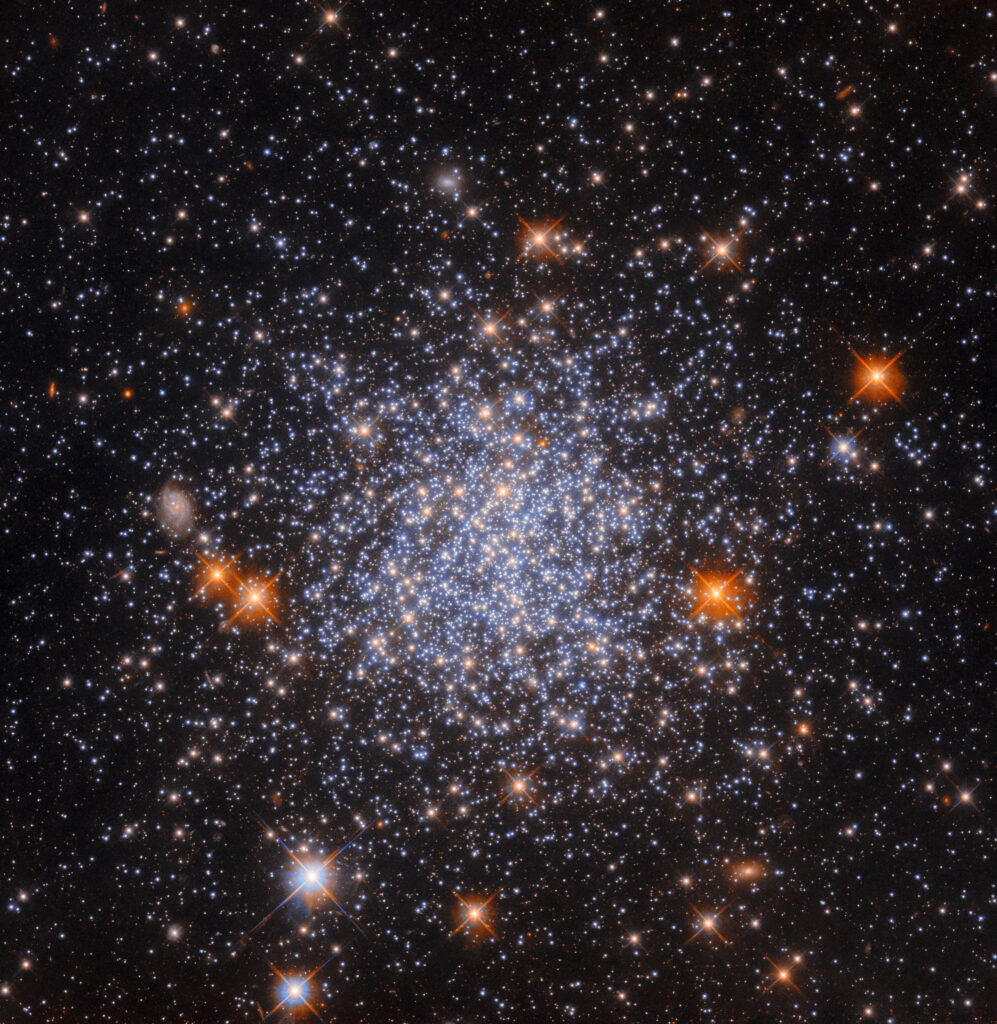Astronomers working with the Hubble telescope have published a new image. It shows the star cluster NGC 1651.

NGC 1651 is located 162,000 light-years from Earth in the Large Magellanic Cloud, the largest and brightest satellite galaxy of the Milky Way. It is a globular cluster: a spherical group of stars bound by a common gravity and moving around the galactic center as a single object.
A notable feature of the image is that the globular cluster practically fills the entire image, although on average such objects range in size from 10 to 300 light-years (the diameter of NGC 1651 is about 120 light-years). At the same time, many other Hubble images often capture entire galaxies, which can be tens or hundreds of millions of light-years in diameter and which also occupy the entire field of view.
In this regard, it may seem that Hubble, like other large telescopes, allows observing completely different-sized celestial objects, zooming them in like a camera with a zoom function. But this is not the case. If small telescopes can zoom in and out to a certain extent, then their larger “colleagues” do not know how to do this. Each Hubble instrument has a fixed field of view. For example, the ultraviolet/visible light channel of the Wide Field Camera 3 (WFC3), which was used to photograph NGC 1651, has a field of view about one-twelfth the diameter of the Moon as seen from Earth. This is the size of the area of the sky that it can observe at a time.
The reasons why Hubble can observe objects of such different sizes are as follows. First, the distance to an object determines how big it appears from the Earth. Therefore, entire galaxies that are relatively far away can occupy as much space in the sky as the globular cluster NGC 1651, which is relatively close. For example, in the image directly to the left of the cluster, a spiral galaxy lurks. It is so far away and occupies so little space in the sky that it almost merges with the foreground stars. And secondly, several images covering different areas of the sky can then be combined into a mosaic to obtain separate images of objects that are too large for Hubble’s field of view.
According to https://esahubble.org
Follow us on Twitter to get the most interesting space news in time
https://twitter.com/ust_magazine


